Tips for Teaching Adding and Subtracting Decimals
As students enter upper elementary, decimals become more and more prominent in math. Students will start to use decimals in many different ways. Learning to add and subtract decimals is usually introduced in lower grades, but 4th grade and 5th grade math curriculums focus heavily on adding and subtracting decimals in many different types of problems. As you are supporting your students and helping them master decimals (you go, you Rockstar Teacher!), then you’ll want to make sure you’re using these tips for teaching adding and subtracting decimals in your classroom.

ADDING AND SUBTRACTING DECIMALS – LEVELED PROBLEMS
When we start exploring adding and subtracting decimals, I always have kids who get it pretty easily, kids who need some practice, and kids who need my direct support with interventions. My leveled practice problems allow me to easily differentiate my work with students to meet them where they are. For my students who need a lot of support, one of the major misconceptions I see is that students line up the ones place value (like they’re adding whole numbers) instead of lining up the decimal points, so this practice activity allows me to help students correct this and line up decimals instead. I have a set of problems for adding decimals as well as a set for subtracting decimals.

USE ANCHOR CHARTS AND MATH POSTERS
You probably have some type of math posters in your classroom for basic operations. Consider adding some posters or a visual aid that focus on decimal addition and decimal subtraction.
Here’s a simple anchor chart that I’ve created to provide my students with a checklist to follow when they’re adding and subtracting decimals using the standard algorithm. It reminds them of the important steps to follow to ensure they’re setting up their problem with decimals properly:
- Line the decimals up, because place value matters!
- Bring the decimal point straight down.
- Fill in blank spaces with zeros if the number of digits in each addend do not match up. Those zero placeholders are SO important!
- Add or subtract each decimal place value to get your answer.


While these may seem like very simple reminders, some students forget these basic steps when following steps for adding and subtracting decimals. Leaving this anchor chart in the classroom so they can easily work down through the reminders will help students build a routine to follow when starting a problem that includes decimals. After students have formed a habit of completing these 4 steps, they’ll find that they make fewer errors when finishing their problems.
You can also have your students recreate this anchor chart in their math notebooks or as a study aid to keep at their desks. Having this available while they are mastering decimals will help them build confidence in their work.
ADDING AND SUBTRACTING MATCHING PUZZLES
These matching puzzles are great for individual practice or for partner work. Students work through addition of decimals and subtraction of decimals problems to find the answers that are on separate puzzle piece cards. I begin to use these when students demonstrate solid knowledge of place value with decimals. Knowing their decimal places might seem like it’s not as important with this skill, but if students know their place values, adding and subtracting becomes easier and makes more sense in their minds.
Don’t forget to laminate these pieces in the decimal puzzles so you can use them year after year!

SUPPLY GRAPH PAPER

One of the most valuable resources I’ve found to help students when learning to add and subtract decimals is graph paper.
Graph paper helps students keep their decimal addition and subtraction problems lined up properly. This is especially helpful for students who may not have the neatest handwriting, or students who have OT needs with writing math problems on paper. They may find that they’re coming up with incorrect answers because they’re not lining their addends or subtrahends up correctly. Teaching decimal problems using graph paper will help students keep their place values lined up and have less chance of making mistakes as they work.
Simple ¼” graph paper works great for 4th, 5th, and 6th grade students. You can use larger size squares based on student needs. If you’re unable to purchase graph paper for your students and your school doesn’t supply it, you can also download and print different types of graph paper. Print Graph Paper offers printable graph paper in many different sizes. You can also choose the color and paper size if you’d like.
ADDING AND SUBTRACTING DECIMALS TASK CARDS
Task cards are a great way to provide extra practice for students and differentiate for all students and their varying math skills. You can assign task cards based on skill level or areas that students need to practice. These task cards are already set up for three different skill levels, so you can print, cut, and practice! Each card includes an addition or subtraction equation involving decimals up to the tenths place and hundredths place.
GIVE STUDENTS PLENTY OF OPPORTUNITY TO PRACTICE
Just as with any math topic, giving your students tons of opportunities to practice is one of the best ways to help them master a skill. Practicing adding and subtracting decimals can become boring quickly. You’ll want to mix up your practice offerings with things like board games, matching games, math centers, and task cards.
I’ve created lots of decimal resources to use in the classroom and to send home for extra practice.
Still stuck? Students will benefit from any concrete models you can use to demonstrate how addition and subtraction of decimals. One of my favorite tools to use is a number line. Students can solve problems in smaller increments while showing what they’re doing for each step on the number line. You can right-click the image and save these to your computer!


ADDING AND SUBTRACTING DECIMALS BOARD GAMES
You can never go wrong with a board game. Students love the friendly competition and it helps them get in the extra practice in an engaging way. This adding and subtracting decimals board game can easily be used for a partner or small group time.
You can also play math games like this spin and answer game. These games are perfect for 5th graders and 6th graders.
These are low-prep activities that students love and they are a great way to reinforce the skills they’re working on.

USE REAL-WORLD CONTEXT
One of my students’ favorite ways to practice adding and subtracting decimals (while I increase my students’ understanding of the concept) is using real life applications. Decimals are used every day when purchasing an item with cash and figuring out how much money they need to buy that item, when measuring something, and when we need a more precise number.
This fun Christmas-themed decimal activity allows students the opportunity to see how adding and subtracting decimals can be used in everyday life.

SPEAKING OF HOLIDAYS…
There are over 20 resources in my store for adding and subtracting decimals that are holiday themed! Check out the list below, and head to my store to grab a resource that matches the time of year you teach this skill. The resources are all interactive activities, including Solve the Room and Color by Number.

OTHER IDEAS YOU MIGHT CONSIDER:
- Using number talks to work through decimal problems and show strategies that might help students as they solve problems.
- Providing place value charts to help students with the vocabulary and prior knowledge needed to be successful.
- Having place value decimal disks on hand for your kinesthetic learners who need visuals to understand the concept.
These tips are a sure way to provide great instruction and immediate support for adding and subtracting decimals. These are also great tools to practice decimal operations if you’re prepping for state testing!
If you’ve implemented one of these activities or tools in your class, I’d love to hear about it! Share how you teach addition of decimal numbers and subtraction of decimal numbers in the comments.
Want to save this post for later? Click on the image and save it to Pinterest!







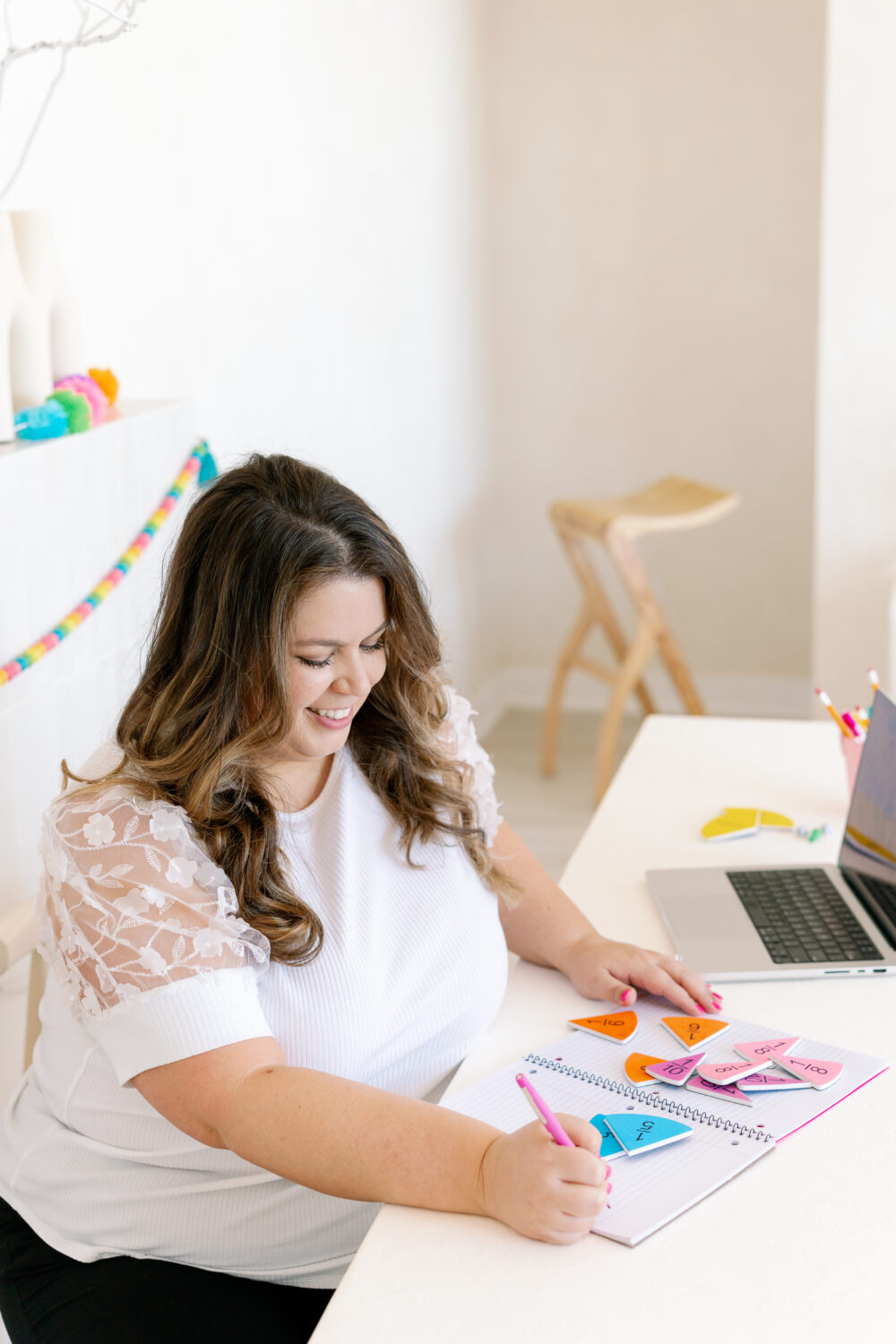

 5th Grade Math Review | Differentiated Math Stations BUNDLE for the Year
5th Grade Math Review | Differentiated Math Stations BUNDLE for the Year 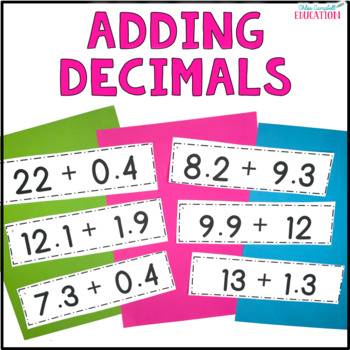 5th Grade Math Review | Differentiated Math Stations BUNDLE for the Year → Adding Decimals Differentiated Math Practice - 5th Grade Intervention Activity
5th Grade Math Review | Differentiated Math Stations BUNDLE for the Year → Adding Decimals Differentiated Math Practice - 5th Grade Intervention Activity 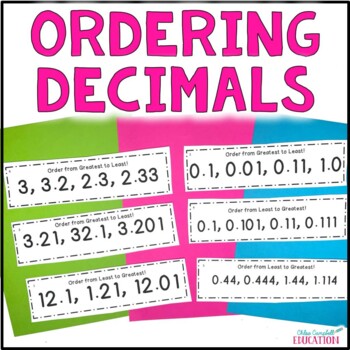 5th Grade Math Review | Differentiated Math Stations BUNDLE for the Year → Ordering Decimals Activity Comparing & Ordering Decimals Differentiated Practice
5th Grade Math Review | Differentiated Math Stations BUNDLE for the Year → Ordering Decimals Activity Comparing & Ordering Decimals Differentiated Practice 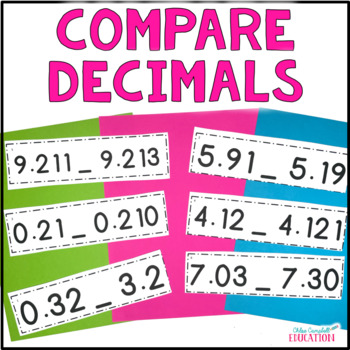 5th Grade Math Review | Differentiated Math Stations BUNDLE for the Year → Comparing Decimals to Hundredths Place Review Activities Differentiated Practice
5th Grade Math Review | Differentiated Math Stations BUNDLE for the Year → Comparing Decimals to Hundredths Place Review Activities Differentiated Practice  5th Grade Math Review | Differentiated Math Stations BUNDLE for the Year → Adding and Subtracting Fractions with Unlike Denominators Leveled Problems
5th Grade Math Review | Differentiated Math Stations BUNDLE for the Year → Adding and Subtracting Fractions with Unlike Denominators Leveled Problems  5th Grade Math Review | Differentiated Math Stations BUNDLE for the Year → Dividing Decimals by Decimals Practice - Differentiated 5th Grade Math Station
5th Grade Math Review | Differentiated Math Stations BUNDLE for the Year → Dividing Decimals by Decimals Practice - Differentiated 5th Grade Math Station  5th Grade Math Review | Differentiated Math Stations BUNDLE for the Year → Dividing Fractions & Whole Numbers in 5th Grade Differentiated Math Center RTI
5th Grade Math Review | Differentiated Math Stations BUNDLE for the Year → Dividing Fractions & Whole Numbers in 5th Grade Differentiated Math Center RTI  5th Grade Math Review | Differentiated Math Stations BUNDLE for the Year → Surface Area and Volume of Rectangular Prisms Leveled Problems - Math Station
5th Grade Math Review | Differentiated Math Stations BUNDLE for the Year → Surface Area and Volume of Rectangular Prisms Leveled Problems - Math Station  5th Grade Math Review | Differentiated Math Stations BUNDLE for the Year → Multiply Decimals by Whole Numbers & Decimal to Hundredths Intervention Activity
5th Grade Math Review | Differentiated Math Stations BUNDLE for the Year → Multiply Decimals by Whole Numbers & Decimal to Hundredths Intervention Activity  5th Grade Math Review | Differentiated Math Stations BUNDLE for the Year → Order of Operations Leveled Problems Differentiated Math Stations - PEMDAS
5th Grade Math Review | Differentiated Math Stations BUNDLE for the Year → Order of Operations Leveled Problems Differentiated Math Stations - PEMDAS 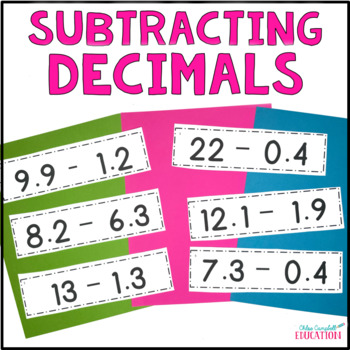 5th Grade Math Review | Differentiated Math Stations BUNDLE for the Year → Subtract Decimals Differentiated Practice 5th Grade Math Intervention Activity
5th Grade Math Review | Differentiated Math Stations BUNDLE for the Year → Subtract Decimals Differentiated Practice 5th Grade Math Intervention Activity  5th Grade Math Review | Differentiated Math Stations BUNDLE for the Year → Measurement Conversion Customary Units Leveled Problems - Differentiated Math
5th Grade Math Review | Differentiated Math Stations BUNDLE for the Year → Measurement Conversion Customary Units Leveled Problems - Differentiated Math 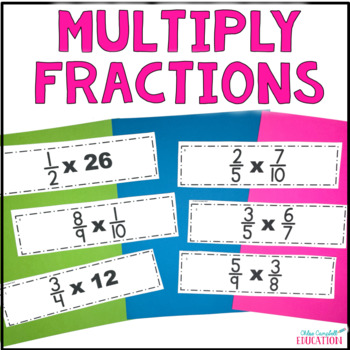 5th Grade Math Review | Differentiated Math Stations BUNDLE for the Year → Multiplying Fractions Leveled Problems - Differentiated Math Stations 5th Grade
5th Grade Math Review | Differentiated Math Stations BUNDLE for the Year → Multiplying Fractions Leveled Problems - Differentiated Math Stations 5th Grade  5th Grade Math Review | Differentiated Math Stations BUNDLE for the Year → 5th Grade Metric Conversion Activities - Converting Metric Units Leveled
5th Grade Math Review | Differentiated Math Stations BUNDLE for the Year → 5th Grade Metric Conversion Activities - Converting Metric Units Leveled